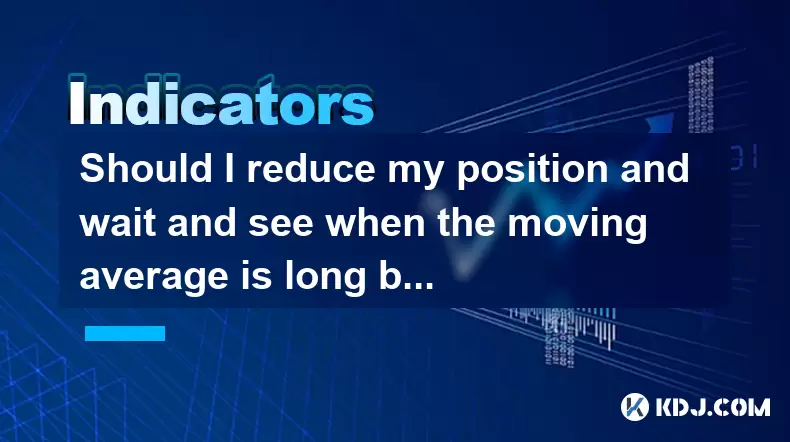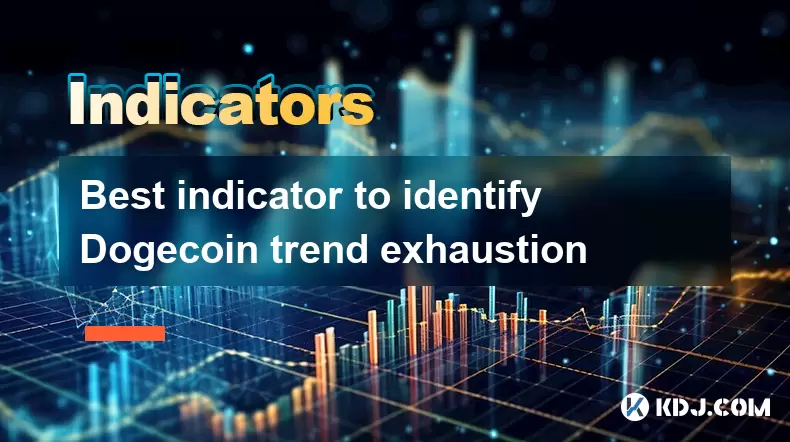-
 Bitcoin
Bitcoin $108,562.4295
0.46% -
 Ethereum
Ethereum $2,533.9553
1.52% -
 Tether USDt
Tether USDt $1.0002
-0.01% -
 XRP
XRP $2.2542
2.23% -
 BNB
BNB $662.4567
1.48% -
 Solana
Solana $151.4114
3.48% -
 USDC
USDC $0.9999
0.00% -
 TRON
TRON $0.2860
0.91% -
 Dogecoin
Dogecoin $0.1685
3.72% -
 Cardano
Cardano $0.5809
1.63% -
 Hyperliquid
Hyperliquid $39.2916
1.85% -
 Sui
Sui $2.8874
0.85% -
 Bitcoin Cash
Bitcoin Cash $496.5801
2.72% -
 Chainlink
Chainlink $13.3582
2.48% -
 UNUS SED LEO
UNUS SED LEO $9.0279
0.07% -
 Avalanche
Avalanche $18.0773
2.30% -
 Stellar
Stellar $0.2426
3.05% -
 Toncoin
Toncoin $2.9086
6.01% -
 Shiba Inu
Shiba Inu $0.0...01170
2.97% -
 Hedera
Hedera $0.1587
3.47% -
 Litecoin
Litecoin $87.4596
1.13% -
 Monero
Monero $317.0425
0.73% -
 Polkadot
Polkadot $3.3778
1.90% -
 Dai
Dai $0.9999
-0.01% -
 Ethena USDe
Ethena USDe $1.0001
-0.01% -
 Bitget Token
Bitget Token $4.4095
0.63% -
 Uniswap
Uniswap $7.3593
6.80% -
 Pepe
Pepe $0.0...09910
3.64% -
 Aave
Aave $274.7388
2.68% -
 Pi
Pi $0.4607
0.48%
Should I reduce my position and wait and see when the moving average is long but the KDJ cross is dead?
When the Moving Average shows a strong uptrend but the KDJ forms a bearish dead cross, traders may consider reducing positions to manage risk and lock in gains.
Jul 01, 2025 at 03:36 am

Understanding the Moving Average and KDJ Indicator
When analyzing cryptocurrency price charts, two of the most commonly used technical indicators are Moving Averages (MA) and the KDJ stochastic oscillator. The Moving Average smooths out price data to help identify trends over a specific period. When the MA line is trending upwards for an extended time, it typically signals a strong bullish trend.
On the other hand, the KDJ indicator, also known as the stochastic oscillator, consists of three lines: K, D, and J. It helps traders identify overbought or oversold conditions in the market. A "dead cross" occurs when the K line crosses below the D line, which is often interpreted as a bearish signal.
Combining these two indicators can provide insight into potential reversals or continuation patterns.
Interpreting a Long Moving Average with a KDJ Dead Cross
In a scenario where the Moving Average is long, meaning it has been rising steadily, but the KDJ lines form a dead cross, this could indicate that momentum is starting to wane even though the overall trend remains bullish.
This divergence between the Moving Average and the KDJ suggests caution. While the broader trend may still be upward, short-term selling pressure is increasing. This might be a sign that some traders are taking profits or that institutional selling is beginning to outweigh buying interest.
Traders should closely monitor volume and candlestick patterns during such periods to confirm whether a reversal is likely.
Why You Should Consider Reducing Your Position
If you're holding a position in a cryptocurrency that shows a long Moving Average but has recently experienced a KDJ dead cross, there are several reasons why reducing your exposure may be prudent:
- The bullish momentum is weakening, as indicated by the KDJ crossover.
- There’s a possibility of a short-term pullback or consolidation phase.
- Reducing position size allows you to lock in gains without completely exiting the trade.
- You retain the flexibility to re-enter at a better price if the trend resumes.
By partially exiting your position, you mitigate the risk of sudden downside movement while keeping a portion of your capital invested.
How to Execute a Partial Exit Strategy
Implementing a partial exit strategy involves careful planning and execution. Here's how you can do it step-by-step:
- Determine the percentage of your current position you’re willing to sell—common choices include 25%, 50%, or 75%.
- Set a clear exit point based on price action, such as just below a recent support level or after a certain amount of profit has been realized.
- Use a limit order to ensure you don’t get filled at an unfavorable price.
- Monitor the remaining position closely and consider setting a trailing stop-loss if the trend resumes.
A well-executed partial exit can protect your portfolio from unexpected volatility while preserving upside potential.
Waiting and Observing: What to Monitor Next
After reducing your position, it’s crucial to continue observing the market for signs of trend continuation or further reversal. Here’s what to watch:
- Check if the price holds above key support levels after the KDJ dead cross.
- Look for a re-crossover of the K and D lines, which may signal renewed bullish momentum.
- Analyze trading volume spikes that could indicate strong institutional activity.
- Keep an eye on news events or macroeconomic factors that may influence the broader crypto market.
Patience and observation are critical after reducing your position, as they allow you to make informed decisions about re-entry or further exits.
Frequently Asked Questions
Q: Can the KDJ dead cross be a false signal in cryptocurrency markets?
Yes, the KDJ dead cross can sometimes produce false signals, especially in highly volatile crypto markets. It's essential to use additional tools like Moving Averages, RSI, or Fibonacci retracement levels to confirm the signal before making any trading decision.
Q: Is it always necessary to reduce position size when encountering a KDJ dead cross?
Not necessarily. If the overall trend is very strong and supported by high volume, some traders may choose to hold their positions. However, reducing exposure can be a safer approach, particularly for risk-averse investors.
Q: How does the length of the Moving Average affect its reliability alongside the KDJ indicator?
The longer the Moving Average period (e.g., 200-day MA), the more reliable it is as a trend filter. Shorter MAs (like 10-day or 20-day) react faster to price changes and may give earlier signals but are more prone to whipsaws. Combining them with KDJ can improve accuracy.
Q: Are there alternative indicators that work better than KDJ in confirming moving average signals?
Some traders prefer using the MACD (Moving Average Convergence Divergence) or RSI (Relative Strength Index) alongside Moving Averages. These indicators offer different insights and may suit various trading styles better than KDJ depending on market conditions.
Disclaimer:info@kdj.com
The information provided is not trading advice. kdj.com does not assume any responsibility for any investments made based on the information provided in this article. Cryptocurrencies are highly volatile and it is highly recommended that you invest with caution after thorough research!
If you believe that the content used on this website infringes your copyright, please contact us immediately (info@kdj.com) and we will delete it promptly.
- Drake, Bitcoin, and Mainstream Music: A New Era?
- 2025-07-07 12:30:12
- Meme Coins, ROI Potential, 2025 Selection: What's Hot and What's Not?
- 2025-07-07 12:30:12
- Bitcoin, Ethereum, and Dogecoin: Navigating the Crypto Landscape in a Wild Week
- 2025-07-07 12:50:11
- Meme Coin Mania: Explosive Picks and Top Buys in 2025
- 2025-07-07 12:50:11
- Bitcoin, Ethereum, and the Cryptocurrency Market: Riding the Wave of Innovation
- 2025-07-07 12:55:12
- Elon Musk, Bitcoin, and Crypto News: A 2025 Perspective
- 2025-07-07 13:10:12
Related knowledge

How to trade Dogecoin based on funding rates and open interest
Jul 07,2025 at 02:49am
Understanding Funding Rates in Dogecoin TradingFunding rates are periodic payments made to either long or short traders depending on the prevailing market conditions. In perpetual futures contracts, these rates help align the price of the contract with the spot price of Dogecoin (DOGE). When funding rates are positive, it indicates that long positions p...

How to spot manipulation on the Dogecoin chart
Jul 06,2025 at 12:35pm
Understanding the Basics of Chart ManipulationChart manipulation in the cryptocurrency space, particularly with Dogecoin, refers to artificial price movements caused by coordinated trading activities rather than genuine market demand. These manipulations are often executed by large holders (commonly known as whales) or organized groups aiming to mislead...

Bitcoincoin market structure break explained
Jul 07,2025 at 02:51am
Understanding the Dogecoin Market StructureDogecoin, initially created as a meme-based cryptocurrency, has evolved into a significant player in the crypto market. Its market structure refers to how price action is organized over time, including support and resistance levels, trend lines, and patterns that help traders anticipate future movements. A mark...

What is the significance of a Dogecoin engulfing candle pattern
Jul 06,2025 at 06:36am
Understanding the Engulfing Candle Pattern in CryptocurrencyThe engulfing candle pattern is a significant technical analysis tool used by traders to identify potential trend reversals in financial markets, including cryptocurrencies like Dogecoin. This pattern typically consists of two candles: the first one is relatively small and indicates the current...

Best indicator to identify Dogecoin trend exhaustion
Jul 07,2025 at 11:29am
Understanding Dogecoin Trend ExhaustionIdentifying trend exhaustion in Dogecoin (DOGE) is crucial for traders aiming to avoid late entries or potential reversals. Trend exhaustion occurs when a prevailing price movement loses momentum, often leading to a consolidation phase or reversal. In the volatile world of cryptocurrencies like Dogecoin, understand...

Dogecoin monthly chart analysis for long term investors
Jul 06,2025 at 10:08am
Understanding the Dogecoin Monthly ChartFor long-term investors, analyzing the monthly chart of Dogecoin (DOGE) provides a macro view of its price behavior over extended periods. The monthly chart captures major trends, key resistance and support levels, and potential reversal zones that are crucial for strategic investment planning. Unlike daily or hou...

How to trade Dogecoin based on funding rates and open interest
Jul 07,2025 at 02:49am
Understanding Funding Rates in Dogecoin TradingFunding rates are periodic payments made to either long or short traders depending on the prevailing market conditions. In perpetual futures contracts, these rates help align the price of the contract with the spot price of Dogecoin (DOGE). When funding rates are positive, it indicates that long positions p...

How to spot manipulation on the Dogecoin chart
Jul 06,2025 at 12:35pm
Understanding the Basics of Chart ManipulationChart manipulation in the cryptocurrency space, particularly with Dogecoin, refers to artificial price movements caused by coordinated trading activities rather than genuine market demand. These manipulations are often executed by large holders (commonly known as whales) or organized groups aiming to mislead...

Bitcoincoin market structure break explained
Jul 07,2025 at 02:51am
Understanding the Dogecoin Market StructureDogecoin, initially created as a meme-based cryptocurrency, has evolved into a significant player in the crypto market. Its market structure refers to how price action is organized over time, including support and resistance levels, trend lines, and patterns that help traders anticipate future movements. A mark...

What is the significance of a Dogecoin engulfing candle pattern
Jul 06,2025 at 06:36am
Understanding the Engulfing Candle Pattern in CryptocurrencyThe engulfing candle pattern is a significant technical analysis tool used by traders to identify potential trend reversals in financial markets, including cryptocurrencies like Dogecoin. This pattern typically consists of two candles: the first one is relatively small and indicates the current...

Best indicator to identify Dogecoin trend exhaustion
Jul 07,2025 at 11:29am
Understanding Dogecoin Trend ExhaustionIdentifying trend exhaustion in Dogecoin (DOGE) is crucial for traders aiming to avoid late entries or potential reversals. Trend exhaustion occurs when a prevailing price movement loses momentum, often leading to a consolidation phase or reversal. In the volatile world of cryptocurrencies like Dogecoin, understand...

Dogecoin monthly chart analysis for long term investors
Jul 06,2025 at 10:08am
Understanding the Dogecoin Monthly ChartFor long-term investors, analyzing the monthly chart of Dogecoin (DOGE) provides a macro view of its price behavior over extended periods. The monthly chart captures major trends, key resistance and support levels, and potential reversal zones that are crucial for strategic investment planning. Unlike daily or hou...
See all articles

























































































